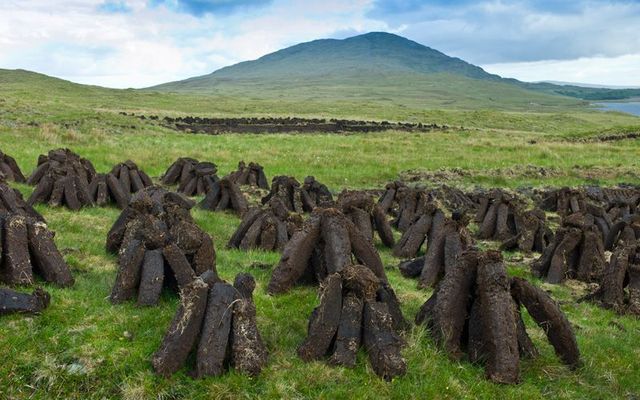Ireland has been referred to the Court of Justice of the European Union by the European Commission “for failure to apply the Habitats Directive (Directive 92/43/EEC) to protect sites designated for raised bog and blanket bog habitats from turf cutting.”
"The Habitats Directive requires Member States to designate their most precious natural habitats and to protect them from harmful activities," the European Commission said in a statement on March 13, announcing that Ireland had been referred to the Court of Justice.
“These sites in Ireland continue to be degraded through drainage and turf cutting activities, and insufficient action is being taken to restore the sites.
“These areas are biodiversity hotspots playing host to important insect and bird species.
“They are categorised as 'priority' habitats under the Directive due to their unique qualities.
“Peat bogs are also vital carbon sinks when healthy, while a UN report estimated that Ireland's degraded peatlands emit 21.5 million tonnes of CO2 equivalent per year.”
The European Commission says it sent a letter of formal notice to Ireland in January 2011, followed by a reasoned opinion in June 2011.
"Despite some progress, the Irish authorities have not fully addressed the shortcomings," the Commission said.
"For instance, whilst some restoration work has been undertaken on raised bog sites, no action has been taken regarding blanket bog sites where Ireland has failed to put in place an effective regulatory regime to protect these unique bog sites.
"Therefore, the Commission sent an additional reasoned opinion in September 2022. The Commission considers that efforts by the Irish authorities have, to date, been insufficient and is therefore referring Ireland to the Court of Justice of the European Union."
Ireland’s Department of Housing, Local Government and Heritage issued a statement on March 13 responding to the European Commission’s action.
“Ireland has proactively engaged with the European Commission and stakeholders in relation to alleged breaches and stands ready to defend its position.
“The state has invested significantly since 2011 in the conservation and restoration of our peatlands.
“Additional progress has been achieved over the past two years in collaboration with stakeholders and turf cutters. This includes:
- An overall decrease in turf cutting. There has been a complete cessation of turf-cutting on almost 80% of the raised bog SACs since 2011 and a reduction of almost 40% on 2022 turf cutting levels in 2023 on raised bogs. Further reductions are expected this year as a result of discussions ongoing presently with turf cutting contractors and their representatives. This is a site by site and season by season endeavour and huge progress is being made by negotiation and agreement.
- A total of 2928 applicants in receipt of the Cessation of Turf Cutting Compensation Scheme in National Heritage Areas (NHA) and SAC. This figure includes 2454 on SACs.
- A ramp up of the peatlands restoration programme on both the raised and blanket bog SAC network is underway with hugely significant acreage under active restoration.
- The successful incorporation into Ireland’s Common Agriculture Policy Strategic Plan of a Results Based Payment System model and roll out to 20,000 farmers under the ACRES scheme on 55 blanket bog SAC.
"Initial scientific analysis shows an improvement in habitat quality on raised bog SACs and that the level of active turf cutting on the blanket bog SACs is lower than previously considered."
The Department said it will "carefully consider the details of the case once papers are received from the European Commission regarding its referral to the Court of Justice of the European Union.
"In the meantime, the Department will continue to implement, prioritise, and advance measures to conserve our protected peatlands in consultation with stakeholders."




Comments